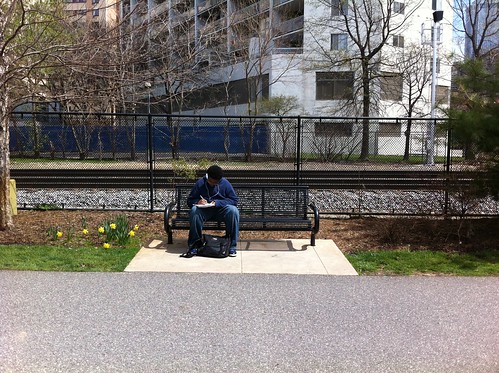If you want to find yourself by travelling out west
or if you want to find somebody else that’s better
go ahead
go ahead
– Rilo Kiley
Five of our 10 students on this year’s river trip are first-time flyers.
I am sitting near three of them as I type this.
Takeoff was awesome.
Everyone held hands and tensed up. I leaned across the aisle when anxiety levels were peaking and told a story about how the kids would have free reign to paint my toenails if we got rained in on the river. This diffused tension a bit.
As the flight leveled off, I told everyone to look out the window. From there, they were glued to the view.
We’re thirty minutes in and every student is reading, playing Angry Birds or wondering at the oddities available from Sky Mall. By the time we touch down for our layover in Chicago, this will all be old hat to them.
I marvel at every takeoff and landing.
I get drag and lift along with all the other forces Mr. Matthews explained in my physical science class. Still, it shouldn’t work. Some element of magic must also be at play to keep us suspended in a metal cylinder with wings miles above the earth.
I’m planning on starting a round of applause when we touch down. We all put our faith in forces I’m sure few, if any, of my fellow passengers completely understand, and it worked out.
Well, if you’re reading this, it worked out.
If you’re reading this, another piece of magic worked out as well – a piece my students and I often overlook the same way most passengers overlook the magic of flight.
I’m making meaning here. I’m writing something, putting together symbols in a specific order to communicate thought. Not only that, you’re taking in those symbols and assigning meaning to them that aligns with the meaning I intend as I write them.
Plus, these symbols and their interpretation aren’t limited to the two of us. Millions of people around the world can make meaning with the exact same set of symbols and with minor assistance can translate those symbols to have meaning with other whole sets of symbols.
And it all started in kindergarten when I learned how to write my name.
Teaching eleventh and twelfth graders, the magic and acts of faith in reading and writing are often take for granted the same way we take for granted takeoff and landing.
Writing assignments are submitted with worry that commas might be misplaced or sentences might run on.
I see the need for polish and revision. I relish that I get to build on the work of those teachers who have come before me and help my students become better readers and writers.
Still, I should do a better job of celebrating the takeoffs and landings of their interactions with language and not take for granted they’ll get where they’re going.
Each sentence a student writes is an act of creation and faith.
I’m tempted to cite literacy statistics from Philadelphia, America or the world, but I won’t.
They don’t matter here.
At some point each student couldn’t read and write. Now they can. That’s tremendous. I will remember that more specifically in the moments before I start assessing my next batch of essays.
For now, I’m supposed to turn off and stow all electronic devices.
The magic’s about to happen.

